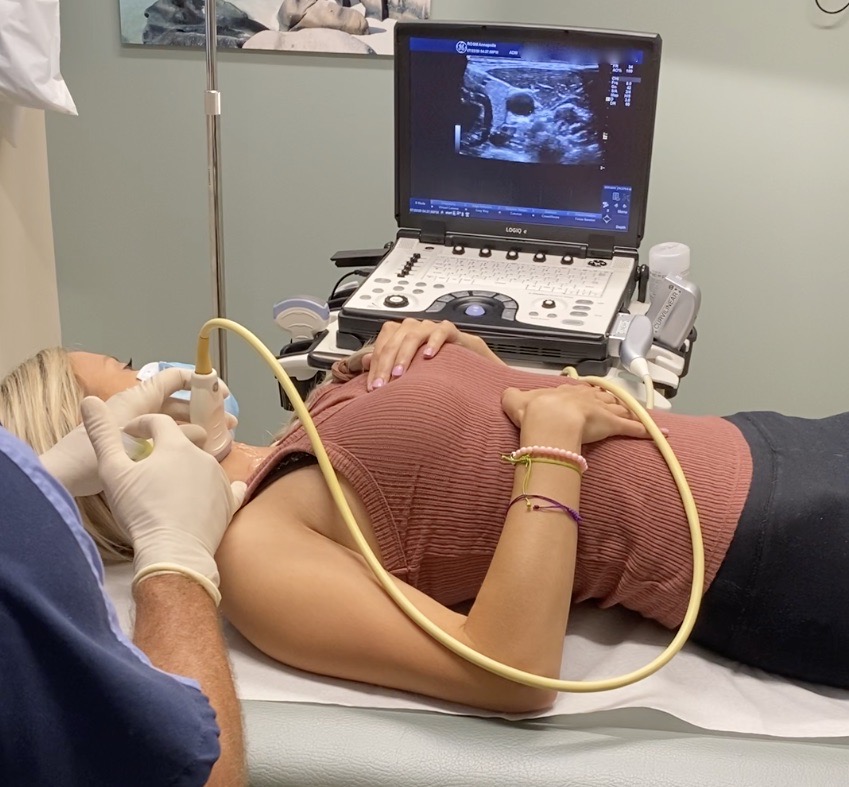
FREQUENTLY ASKED QUESTIONS
1. How does SGB help PTSD symptoms?
The Stellate Ganglion is part of the cervical sympathetic chain, a key part of the sympathetic nervous system, which is the “fight or flight” nervous system. In PTSD and some other anxiety conditions, the “fight or flight” nervous system gets stuck in the “ON” position. By precisely placing long-acting local anesthetic (ropivacaine) around the stellate ganglion, we can turn off the unproductive and chronic “fight or flight” response for several hours. This allows the brain and the body to “reset” back to a non-anxiety state. The brain has a quality called “neuroplasticity”, which means it can actually have durable change in response to treatments like an SGB. What we do know and can measure is this “resetting” results in long-term relief of anxiety symptoms.

2. Does SGB help with Traumatic Brain Injury (TBI)?
Bilateral SGBs resulted in 50% improvement of TBI symptoms.
3. What symptoms does SGB treat?
We have used SGB to successfully treat the anxiety symptoms associated with PTSD. While many people improve in a variety of their symptoms, the symptoms of “hyperarousal” improve dramatically for most. These symptoms, caused by a stimulated sympathetic nervous system, include irritability, angry outbursts, and poor sleep. The sympathetic nervous system drives the physical symptoms that accompany re-experiencing traumatic events (“flashbacks”), such as a racing heart, sweating, and increased body tone, and these symptoms improve significantly after SGB. We know that these symptoms can be debilitating, ruin relationships, and serve as barriers to effective therapy.

4. What is the % of success?
We carefully screen our potential patients to select those that have the best chance of having success with the SGB. In a properly selected patient, we have a published success rate of over 85% (defined by significant improvements in the PCL-5 score).
5. Why is ultrasound-guided SGB more effective?
We will use ultrasound guidance to safely guide the needle around the nerves and blood vessels in the neck as we place it next to the stellate ganglion. under x-ray (fluoroscopic) guidance, only bones are visible. This makes it impossible to see the nerves and requiring us to approximate their position. Using ultrasound guidance to safely perform an SGB takes special training and considerable skill. During her fellowship in non-surgical pain management at Texas Christian University, our provider learned to do SGBs with fluoroscopic-guidance. Ultimately, she rejected this method as being more painful, less efficacious and unnecessarily risky as it exposes patients to contrast dye and ionizing radiation from the x-ray. Doesn’t it just make sense that you should be able to actually see your target as well as avoiding major blood vessels and nerves?

6. Will I be sedated?
You will NOT require sedation.
7. What are the risks of the SGB injection?
The overall risks of having a significant adverse event are very small (much less than 1 in 1000) when performed by a skilled provider with ultrasound guidance. There is a very small risk of a seizure from inadvertently injecting the local anesthetic into a blood vessel. There is an extremely small risk of forming a dangerous hematoma (collection of blood from a bleeding vessel). This risk is very small in people not taking blood thinning medications. People who are on blood thinners will need to stop them temporarily (always by the instruction and guidance of their doctor) prior to getting this injection.
About 20 percent of the time after a block, some patients get a hoarse voice or feel like there is something in the back of their throat. This occurs when the anesthetic spreads to another nerve near the larynx. This is not a mistake, it just happens sometimes depending on anatomy. The hoarse voice or feeling in your throat, if it occurs, will wear off in 3-6 hours.
8. What do I do if the initial right sided block doesn’t give me the results I was hoping for?
Medical literature demonstrates that SGB provides durable relief from anxiety symptoms associated with PTSD! That being said, no therapy is 100% effective for all patients. You may have other medical conditions affecting your anxiety symptoms which may not respond to treatment with SGB. However, if you are a good candidate for this therapy, (PTSD diagnosis with an elevated PCL-5 score) and fail to respond to a right-sided SGB, then you should consider a left-sided SGB. This must be done at least one day later for safety reasons. (NEVER have a block on both sides of the neck within a 12-hour period; in theory this could result in a fatal blockage of the airway). The exception to this is if a short acting local is used for non-PTSD symptoms (long covid etc).
Although the exact percentage isn’t fully known, an estimated 1-5% of patients who don’t respond to a right-sided stellate ganglion block (SGB) experience significant relief from a left-sided SGB. A 2020 study reported these encouraging findings. Additionally, our data suggests that up to 20% of patients who show a partial response to a right-sided SGB may experience a more profound response to a left-sided SGB. This variation likely stems from anatomical differences in how individuals wire their “fight or flight” systems. However, if a patient does not respond to a properly performed SGB with a clear Horner’s sign on either side, SGB may not be an effective treatment for them, and we should avoid further attempts.
9. What does SGB NOT treat?
SGB is not a specific treatment for Autism, Bipolar disorder, Schizophrenia or any variants of Schizophrenia, Personality Disorders or Seizure disorders. However, people with these conditions may ALSO have PTSD and anxiety. SGB can still be very helpful IF they also have PTSD or anxiety symptoms.
10. Can I drive after the procedure?
The accepted medical practice is that you cannot drive for 1-8 hours after this procedure depending on the local anesthetic injected. Please plan to have a driver with you.
For more information click this link –> CLICK HERE
NIH is a reputable resource, also a great read on the SGB and its effectiveness –> CLICK HERE

